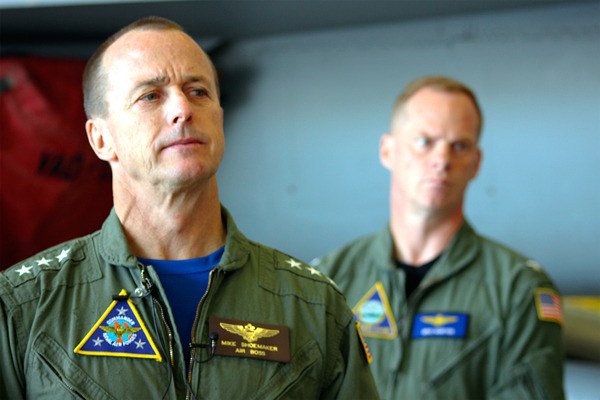Whidbey Island Naval Air Station will remain open for the foreseeable future and be a key player in international affairs, according to a top Navy official.
Commander of U.S. Naval Air Forces Vice Admiral Mike Shoemaker, the “air boss” in charge of all Naval aircraft on the West Coast, stopped by NAS Whidbey Wednesday and chatted with media about the future of the base.
The vice admiral described the base as “a strategic asset” in that shift that is home to two key platforms — the EA-18G Growler and the P-8A Poseidon.
The U.S. Department of Defense identified a need for more Growlers to enhance the United States’ electronic attack capability and officials would like to place some of these squadrons at Whidbey.
The Navy also is replacing the P-3 Orion with the Poseidon, which will bring three additional squadrons to the base.

The assets Whidbey brings to the table for training aviators is hard to replicate anywhere else in the world, he said. He emphasized the importance of the Navy’s plan to introduce electromagnetic transmitters to its electronic-warfare training on the Olympic Peninsula.
The Navy has flown training missions over the Olympics for decades but would like to equip three trucks with emitters that would drive along United States Forest Service roads and give Growler pilots a chance to practice identifying signals, much as they would in combat.
That plan is stalled as the U.S. Forest Service wades through more than 3,000 public comments, many of them opposed to the project because of concerns about noise or fears about electromagnetic radiation.
Shoemaker said that air crews wouldn’t be actively jamming signals and the practice they would get is vital for dealing with worldwide threats.
He also defended training at an airfield near Coupeville that has drawn considerable controversy and a federal lawsuit from neighbors concerned about noise and other effects of aircraft.
The landing strip closely replicates conditions pilots would encounter landing on an aircraft carrier.
“The environment replicates what we see on the ship,” he said. “It’s very dark at night. It’s very realistic for our pilots.
“This opportunity is incredibly valuable.”


